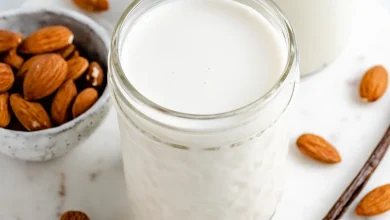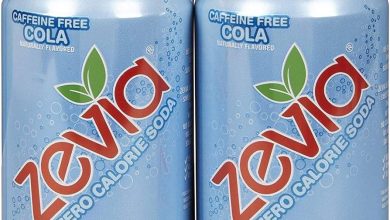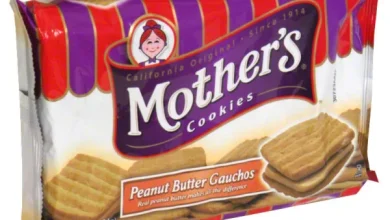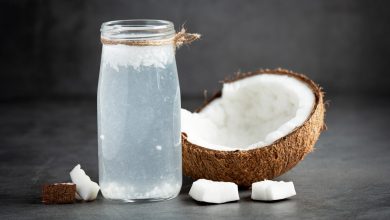Cookies and Brownies Nutritional Information
Cookies and brownies are some of the most commonly prepared baked treats, loved for their delightful sweetness, chewy texture, and rich flavors. These indulgent favorites not only satisfy cravings but also provide an energy boost, making them perfect for dessert tables, family gatherings, or a quick pick-me-up snack. Below is the detailed nutritional breakdown for a standard serving.
Nutritional Information
| Nutrient | Amount per Serving | Unit |
|---|---|---|
| Energy | 405.0 | kcal |
| Protein | 4.8 | g |
| Total Fat | 16.3 | g |
| Saturated Fat | 4.235 | g |
| Carbohydrates | 63.9 | g |
| Dietary Fiber | 2.1 | g |
| Sugars | 36.61 | g |
| Calcium | 29.0 | mg |
| Iron | 2.25 | mg |
| Magnesium | 31.0 | mg |
| Phosphorus | 101.0 | mg |
| Potassium | 149.0 | mg |
| Sodium | 286.0 | mg |
| Zinc | 0.72 | mg |
| Copper | 224.0 | mcg |
| Manganese | 0.128 | mg |
| Selenium | 6.3 | mcg |
| Vitamin C | 0.0 | mg |
| Thiamin (B1) | 0.255 | mg |
| Riboflavin (B2) | 0.21 | mg |
| Niacin (B3) | 1.721 | mg |
| Vitamin B6 | 0.035 | mg |
| Folate | 12.0 | mcg |
| Vitamin B12 | 0.07 | mcg |
| Vitamin A | 20.0 | mcg |
| Vitamin E | 0.15 | mg |
| Vitamin D2 | 0.0 | mcg |
Allergen Information
Cookies and brownies typically contain ingredients such as wheat (gluten), eggs, milk, and often tree nuts or soy. If purchasing pre-made or preparing from store-bought mixes, always check the ingredient label for potential cross-contamination with other allergens like peanuts. Those with gluten intolerances or allergies should opt for certified gluten-free flours, and individuals with dairy sensitivities can substitute non-dairy milk or butter alternatives.
Dietary Preferences
Cookies and brownies can be easily adapted to meet various dietary preferences:
- Vegetarian-Friendly: Most classic recipes align with vegetarian diets.
- Vegan Options: Substitute eggs with applesauce, flaxseed meal, or commercial egg replacers, and replace butter with plant-based alternatives like coconut oil or vegan butter.
- Gluten-Free Alternatives: Use gluten-free flours such as almond flour, oat flour (certified gluten-free), or pre-mixed gluten-free baking blends.
- Lower-Sugar Variations: Replace sugar with natural sweeteners like stevia, erythritol, or coconut sugar to reduce sugar content.
- High-Fiber Options: Incorporate whole wheat flour, oat flour, or add fiber-rich ingredients like chia seeds and flaxseeds to the batter.
Advice for Baking Cookies and Brownies
-
Achieve the Perfect Texture:
- For chewy cookies, use a combination of white and brown sugar.
- For fudgy brownies, do not overmix the batter—blend until ingredients are just combined.
-
Mind Your Portions:
- While cookies and brownies are irresistible, consider portioning them into smaller servings to help manage sugar and calorie intake.
-
Storage:
- Keep cookies in an airtight container at room temperature for up to 5 days.
- Brownies can be refrigerated for up to 7 days or frozen for long-term storage.
-
Add Nutritional Value:
- Incorporate nutrient-dense ingredients such as nuts (walnuts, almonds), dark chocolate, or dried fruits to boost essential vitamins and minerals.
-
Experiment with Flavors:
- Try adding cinnamon, vanilla, citrus zest, or espresso powder for an enhanced depth of flavor.
Conclusion
Cookies and brownies remain timeless treats that bring joy to every occasion. With careful attention to allergens and dietary needs, they can be adapted to suit a variety of preferences, ensuring everyone can enjoy these sweet delights. By understanding their nutritional values, you can balance indulgence with mindful choices, creating recipes that are both delicious and satisfying. Whether you’re baking from scratch or opting for convenience, these baked goods can easily become a staple in your culinary repertoire.
Enjoy creating memories with every bite of these irresistible goodies! 🍪










